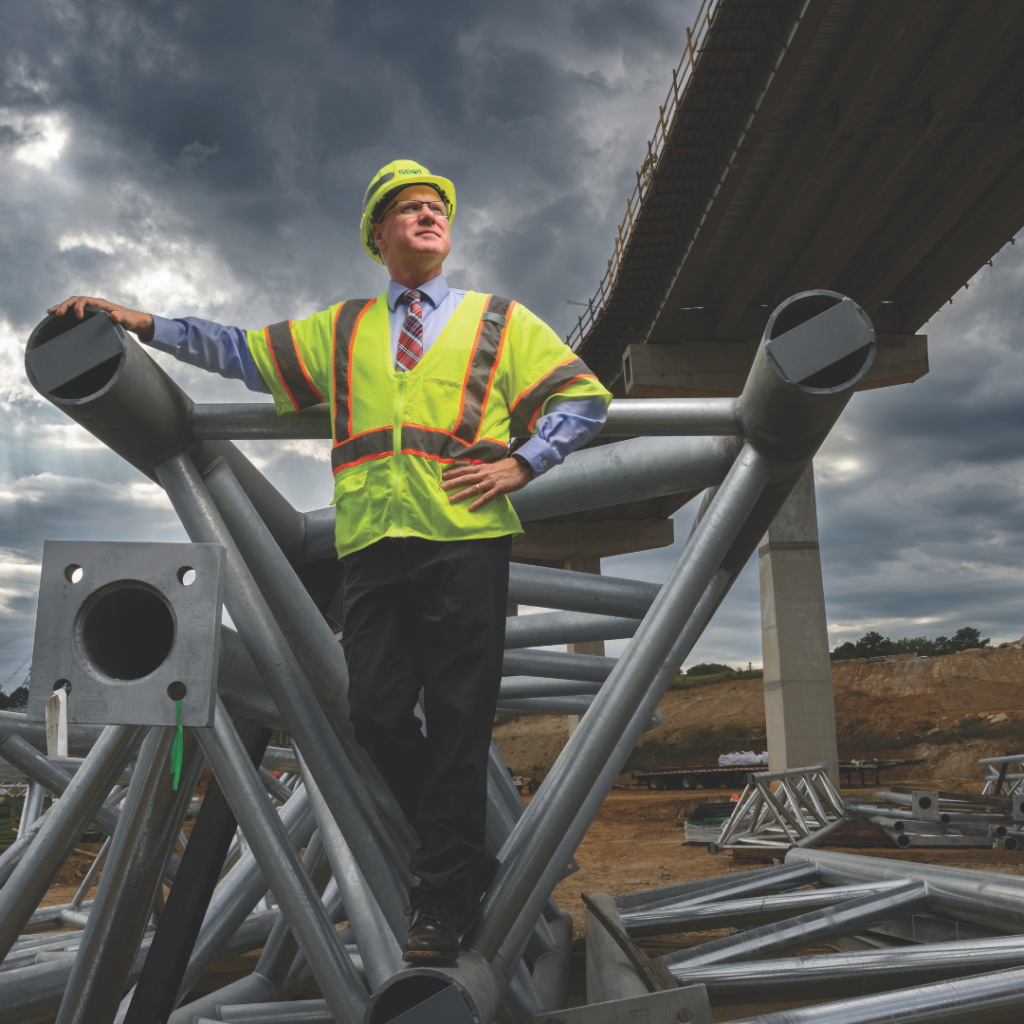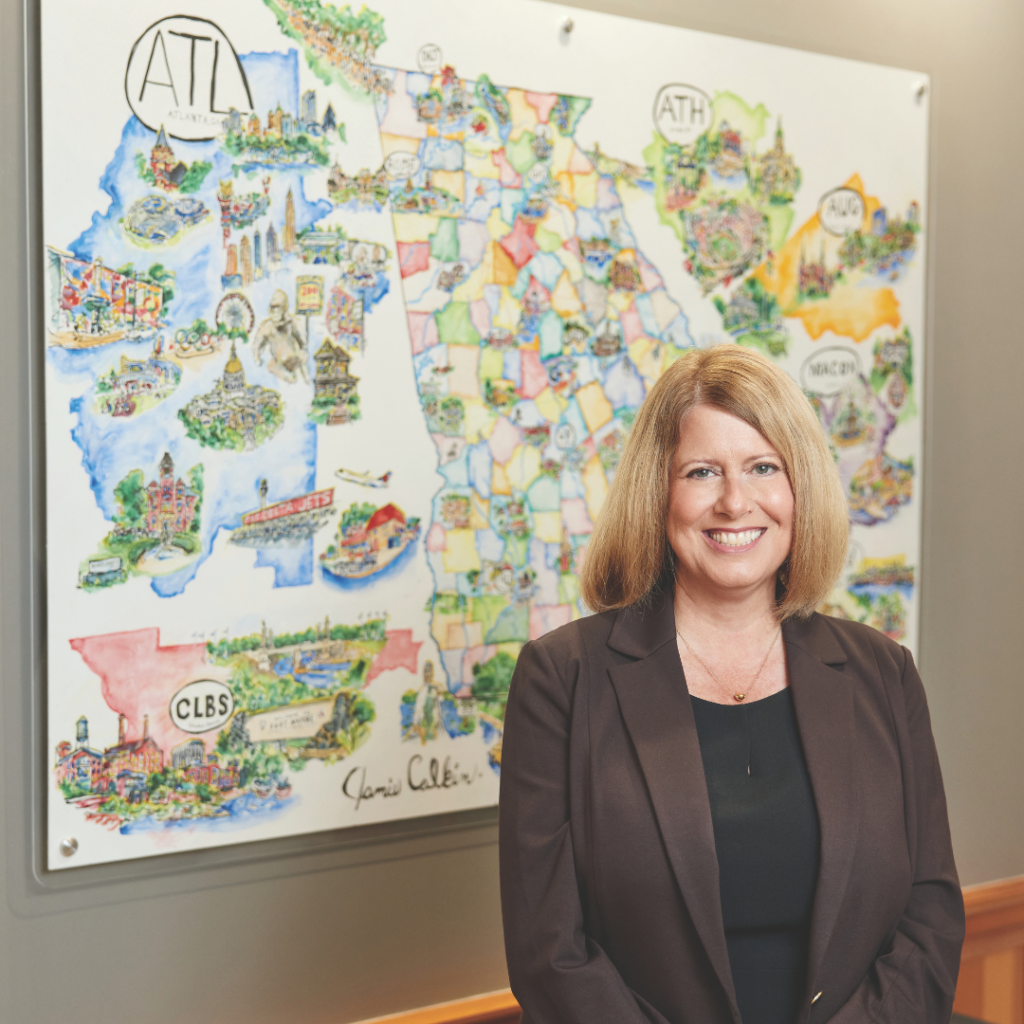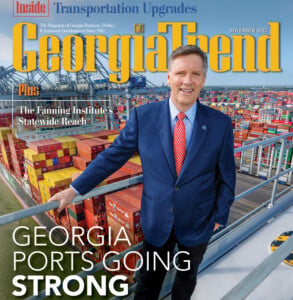Gimme shelter: Atlanta’s Housing Crunch
Facing a housing crunch, Atlanta and Savannah get creative about creating new places to live – with an emphasis on housing that’s affordable.
Atlanta – and all of Georgia, really – is not alone in facing a housing crisis. Nationwide, estimates of the housing shortfall range from 1.5 million units in metropolitan areas to up to 5.5 million overall, depending on whom you ask (the National Association of Home Builders in the first instance and the National Association of Realtors in the second). And the problem’s even worse than those projections because they’re based on 2021 data.
The shortage is particularly acute when it comes to affordable housing. Housing is considered affordable if the renter or owner pays no more than 30% of their gross income for their housing costs, including utilities. In practice, when developers, community leaders and elected officials talk about “affordable housing,” they usually mean housing that’s made available at lower-than-market rates to families who earn less than the area median income.
But there’s a shortage of housing that’s affordable, too – meaning housing that’s moderately priced – for those who earn more than the median income. They may be able to pay for housing at market rates, but face choices like never taking a vacation or working two jobs to pay for it.
“It’s not just a deficit of housing,” says Laura Lane McKinnon, executive director of Housing Savannah, a nonprofit that supports the Savannah Affordable Housing Fund. “It’s also a mismatch of what people need and want.” In Savannah, that includes the “missing middle” – housing that is denser than single-family but not as dense as the many-storied apartment towers you’d see in Midtown Atlanta, for example (think duplexes, triplexes or accessory dwelling units, also known as ADUs) – as well as mixed-use redevelopment. In Downtown Atlanta, it means ambitious efforts by the city and public-private partners to convert office buildings to residential, bringing more people to live downtown – as well as a plan by a private company to transform its iconic headquarters into a vertical mixed-use tower.
Second Lives in Atlanta
All buildings have a useful life, which ends at some point. Some get to be reborn.

Senior Living: Pearl Stephens Elementary School in Macon was transformed into affordable housing for seniors. Photo credit: contributed
In Macon, for example, Pearl Stephens Elementary School, built in 1928, is now transformed into Pearl Stephens Village and offers affordable housing for seniors. It’s a similar story for Hunt School Village, which lived as Hunt Elementary until it was redeveloped in 2016. The Macon-Bibb County Housing Authority’s nonprofit arm, In-Fill Housing, spearheaded both projects. More recently in Savannah, the historic Romana Riley Elementary School became a senior living community with affordable housing units in 2019, with a renovation of the main building and annex and the addition of a new building by developer W.H. Gross Construction Company, based in Kingsland.
This kind of adaptive reuse isn’t new, although it’s not exactly common. School buildings are generally well-built, have big floorplates with lots of windows and high ceilings, and are often near public transportation. And if the building is designated as historic, a developer may be able to obtain a historic rehabilitation tax credit.
The challenges are bigger when it’s an office building that’s being converted. But so is the spotlight.

Design Challenges: Geoff Koski, president of consulting firm KB Advisory Group, at a new mixed-use development in Decatur. Photo credit: Daemon Baizan
Even after return-to-office mandates, older office space hasn’t filled up post-pandemic, says Geoff Koski, president of KB Advisory Group, a real estate and economic development consulting firm based in Atlanta. “Older office space just doesn’t meet the demands that today’s worker has,” Koski says. “What’s happening in Downtown Atlanta and elsewhere is [people] saying, ‘These are important buildings, but we need to give them new life by creating an opportunity for them in today’s world as opposed to yesterday’s world. Who are the people who want to be here?’ Right now, the answer to that is we need more residential in Downtown Atlanta.”
That’s leading to second lives for two buildings that dominate the skyline. One of them, the 41-story tower at 2 Peachtree Street, will anchor what developer Egbert Perry, chair and CEO of the Integral Group, describes as a “cohesive, transit-connected district that brings together public and private sector uses.” Built in 1966, the 2 Peachtree tower sits at the cusp of MARTA’s Five Points Station, the transit system’s hub; adjacent are 1 Peachtree and 14 Marietta, which will also be redeveloped. The result will be a mixed-use, mixed-income site that includes affordable housing – part of Mayor Andre Dickens’ goal to build or preserve 20,000 affordable housing units by 2030.
Invest Atlanta, the city’s economic development arm, bought 2 Peachtree from the state for $39 million, using funding assistance from the Eastside Tax Allocation District. Two Peachtree Partners, a joint venture between the Integral Group, The Atlantic Cos., T. Dallas Smith & Co. and Lalani Ventures, was selected as the developer.
“The city is really trying to make it happen,” says AJ Robinson, president of Central Atlanta Progress and the Atlanta Downtown Improvement District. “This is a front-and-center effort to show the community they’re serious about affordability. This would be the most visible way to demonstrate those goals and aspirations … to make this iconic building affordable for a good portion of it.”

Office to Residential: Rendering of 2 Peachtree Street in Downtown Atlanta, below, which is being redeveloped to include affordable housing. Photo credit: contributed
Plans go beyond housing, though. “This strategy isn’t just about repurposing buildings – it’s about creating centers of economic activity that can bring new businesses, residents and cultural assets back to the heart of the city, positioning Downtown Atlanta as a place where people want to live, work and gather,” Integral Group founder Perry said in an email.
He added, “This means incorporating recreational spaces, retail and dining options, green spaces and housing that meets a range of income levels.”
Still, office-to-residential conversions face unique challenges. Robinson notes there have been conversions of older office buildings (built in the ’40s and ’50s) to residential or hotels before the 1996 Olympics. But most of Downtown Atlanta’s office towers were built in the ’60s and onward. For those, “there are significant challenges just because of the size of the floor plates and the lack of infrastructure for multiple units within the building – just the way it’s built,” says Koski, whose firm did a study on the economic impact of commercial-to-residential conversion for Central Atlanta Progress.
Basically, most newer office buildings don’t have as many outside windows as residential units need, and they also don’t have the right plumbing to create many bathrooms on each floor. They may also have too few or too many elevators and elevator shafts. “It’s not that it can’t be done, but it becomes exceedingly difficult and most importantly, costly,” says Koski. “With enough money you can overcome [these challenges], but at some point, the units you’re creating aren’t affordable enough for anyone to live in them.”
The feasibility study found that, because of the costs to convert such buildings, developers need funding incentives (tax abatements and credits, grants or direct funding) to help offset construction costs. In the case of 2 Peachtree, that includes public-private partnerships – “strategically aligning public incentives with private capital,” as Perry puts it.
When complete, 2 Peachtree will be the tallest residential tower in Downtown – but it will share the spotlight with a number of big projects, including CIM Group’s 50-acre Centennial Yards, a $5 billion redevelopment of “The Gulch” (the area between State Farm Arena and Mercedes-Benz Stadium) into a mixed-use district that’s well underway. In June, the city announced plans for another downtown office building, the former home of The Atlanta Constitution, that’s been vacant for decades. Built in 1947, the building will be redeveloped to include affordable housing units and commercial space.
Big as that all is, there’s another project that’s turning heads: in September 2024, Georgia-Pacific announced plans to turn its 51-story corporate headquarters into a mixed-used development, with about 400 apartments on the top floors. The company will maintain offices in the building, which will also include street-level retail and restaurant space. A 35,000-square-foot plaza will provide a gathering place.
Georgia Pacific hasn’t released a budget for the project, which has a completion date of 2027, and it’s unclear whether it will include affordable housing. As with 2 Peachtree, the goal of the conversion goes beyond housing. “We’ve long been assessing how to best utilize our assets in a way that created the most value for our company and employees, the city and its residents, as well as local businesses,” Suzanne Maynard, project lead for GP, said in an email. “It transforms the area into a mixed-use destination that appeals to residents, workers and tourists, helping to rejuvenate downtown as a hub of commerce and culture.”
This conversion is forward-looking because the building, built in 1982 and sitting on top of the Peachtree Center MARTA Station, has not reached the end of its functional life, says Koski. “I think the owner is looking forward and saying, ‘How can we make this building relevant far into the future?’” he says.
Robinson notes the building’s status as an architectural icon of the skyline, with its pink granite and stair-step design. “I’d give them great creative credit for trying to enhance their campus with housing [that will have] unbelievable views of the metro area,” he says. “They’re trying to enhance the rest of the property as well, which would make it seem like a new neighborhood.” Speaking about 2 Peachtree and G-P, Robinson says, “Both would be incredibly welcomed into our downtown community.”
Savannah: Dense, but Beautiful
If Atlanta wants more people to come and live downtown, Coastal Georgia is trying to figure out where to put the people who are already arriving. A study by Georgia Tech’s Enterprise Innovation Institute found that the four core counties around Savannah – Bryan, Bulloch, Chatham and Effingham – plus the city itself will need to add almost 41,000 housing units by 2030.

Thoughtful Development: Betsy McGriff, project manager for Georgia Tech’s Center for Economic Development Research. Photo credit: Daemon Baizan
The increase is largely driven by the Hyundai Metaplant in Bryan County and the associated suppliers in the region. Betsy McGriff, project manager for Georgia Tech’s Center for Economic Development Research, who oversaw the study, calls that area “ground zero for Hyundai and all the suppliers.” Savannah, the four counties and the Savannah Economic Development Authority collaborated on the study, and McGriff says that regional cooperation will be key, especially when it comes to infrastructure like water, sewer and roads.
“We do economic development that way, and it’s been hugely successful in Georgia,” she says. “Why wouldn’t it be successful to do community development that way?”
Although there aren’t as many adaptive reuse opportunities in these communities, a similar tenet applies: It’s cheaper to build housing where the infrastructure already exists. McGriff says communities need to look at the barriers to infill development and redevelopment to make it affordable for developers while also making it feasible for existing residents to accept growth. “You get one chance to develop in a way that is thoughtful and preserves green space – and preserves that small-town feeling that’s important to people in these communities,” she says.
In Savannah, workforce housing is always in demand given the city’s hospitality-based economy and high-volume seaports. Large infill redevelopments are taking shape at Oglethorpe Mall and the old Coastal Empire Fairgrounds; while the mall apartments are market-rate, the fairgrounds are owned by the city and will include affordable units in a mixed-use, mixed-income development. McKinnon notes a major public-private partnership between Chatham County and Coastal Empire Habitat for Humanity that will build more than 80 affordable detached homes and quadplexes in downtown Port Wenworth on city property. “It’s an ambitious project on a parcel that probably would not have been touched in years past because it was too close to municipal services or viewed as unsuitable for that much density,” says McKinnon.
McGriff thinks that Savannah’s “dense but beautiful neighborhoods” in its downtown and historic areas could serve as a model for missing middle housing – what she calls “neighborhood integrated multifamily.”
“You get one chance to develop in a way that is thoughtful and preserves green space – and preserves that small-town feeling that’s important to people in these communities.” – Betsy McGriff, project manager for Georgia Tech’s Center for Economic Development Research.
“Houses that look like a single-family home but are really duplexes or quadplexes,” she says. “It fits in the fabric of the neighborhood. Savannah has a lot of that fabric that could be replicated because everywhere has an urban core.”
The Savannah City Council recently approved a density bonus that will allow developers to build duplexes and quads in certain neighborhoods if they include affordable housing. McKinnon says she was pleased the amendment to the zoning code passed, although she notes it was watered down after some neighborhoods originally included pulled out after residents voiced opposition.

Historic Renovation: Romana Riley Elementary School’s 110-year-old main building in Savannah, above, was converted to loft apartments for a senior living community, which also includes a 90-year-old annex and a newly constructed building, top. Photo credit: contributed
She favors a broader fix for the zoning code that would make the missing middle legal in more areas. “I live in Ardsley Park, which is a central Savannah neighborhood, and if a duplex or quadplex in my neighborhood got hit by lightning and burned down, it could only be replaced with a single-family home,” McKinnon says. “We have the most coveted neighborhood in the Southeast, and we couldn’t build it today – none of our zoning allows for [the housing in] the historic district.”
There are also limits on accessory dwelling units she’d like to see changed. In 2023 the city council reduced the minimum lot size requirement for ADUs – which have a history in Savannah stretching back to the city’s founding – but they’re still limited to 40% of the footprint of the principal residence.
“Large homes on large lots aren’t really what folks want,” McKinnon says. “They would much prefer a cottage in a cottage court, a condo, a townhome.”
John Anagnost, planning manager for the city of Savannah, says another effect of “an old-fashioned zoning ordinance” is that developers can’t build apartments in commercial districts unless there’s commercial on the ground floor (lofts above a store or restaurant, such as one sees along Broughton Street in downtown). Anagnost says that was a factor for a developer who recently decided to convert the Savannah Garden Hotel on White Bluff Road to single-room occupancy units rather than request rezoning for developing apartments. “That really is a workaround,” he says. “The true solution would be to amend those business and office districts to allow standalone apartment development.” It would also help avoid odd islands of different zoning, like the apartments at Oglethorpe Mall that are still surrounded by business zoning.
Building residential at the mall, situated on public transit, is a good example of mixing commercial and residential buildings to provide a live-work-play atmosphere and more housing options. “I think we’re going to see more aging shopping centers considered by apartment developers,” Anagnost says. Basically, he says, it’s like Savannah’s current residential-atop-commercial, only horizontal. “You can have a development that mixes commercial and residential but in different buildings and parcels, that can function in the same way,” he says. “I think we’re going to be moving forward in that direction.”
Although Savannah doesn’t have many office towers to start with – and if any of the existing office buildings downtown were to be converted, it would probably be to hotel space – the two cities do share a similar approach to thinking about housing needs now and in the future. As McKinnon says, “People are beginning to realize that municipalities have a responsibility to analyze the highest, best use of their empty or underutilized properties.” 







